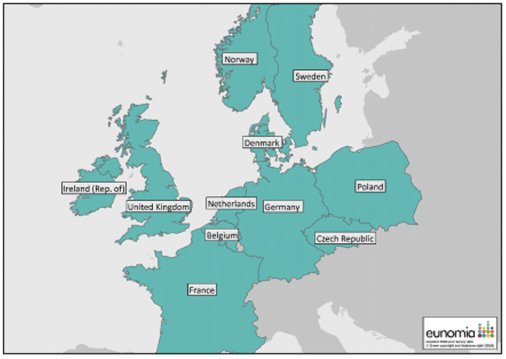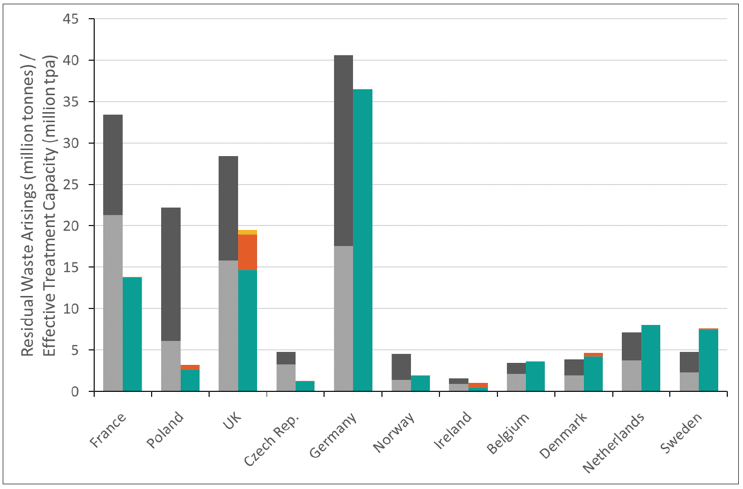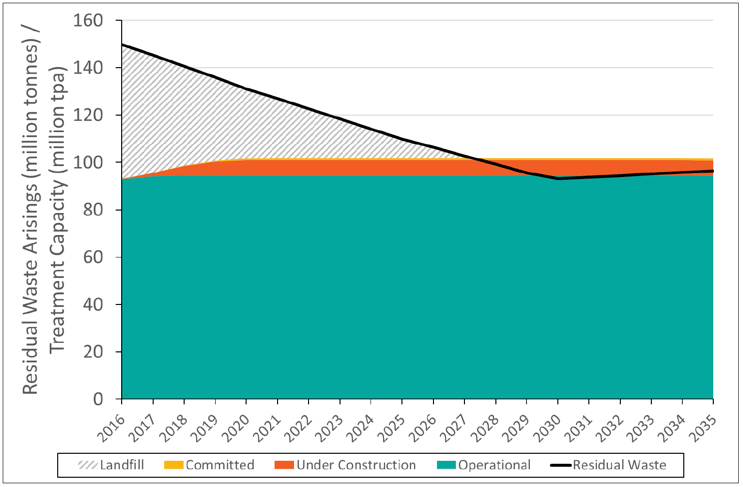Waste markets study: full report
Study regarding treatment options for Scottish biodegradable municipal waste.
Appendix 3: European Market
This appendix presents an analysis of the supply and demand of thermal treatment capacity across 11 European states shown in Figure 13. Each of these countries is actively involved in trading RDF or Solid Recovered Fuel (SRF) with others within the group, and together they form a natural trading 'cluster'. Due to their geographical proximity in Northern Europe they are referred to here as the 'Northern Cluster'.
Figure 13: The Northern Cluster

The analysis below presents an estimate of the current and future residual waste treatment 'capacity gap' for the Northern Cluster. This relates to the tonnage of residual waste which is 'potentially available' to operators or developers of new treatment facilities relative to capacity estimates.
It should be noted that reporting methods vary across the Northern Cluster. Figures ought to be treated with caution, especially as regards comparison between Member States, because of varying data collection methods, the lack of recent data, and the complexity of waste-treatment streams. Applying different methodologies and assumptions to estimate waste quantities can have a significant impact on the results.
Figure 14 shows that, in all but three of the countries analysed, there is a current state of under capacity with demand outstripping supply. Sweden, Denmark, and the Netherlands already have more treatment capacity than residual waste, and receive imports of RDF from the UK. Some of the countries that have less capacity than waste are also recipients of UK waste exports (e.g. Germany, Norway). However, capacity within the Northern Cluster is for the most part already fully utilised at current levels of export.
Figure 14: Residual Waste Arisings and ‘Effective’ Treatment Capacity in Northern Cluster Countries

Figure 15 shows how the capacity gap is anticipated to change over time with changes in waste arisings and additional treatment infrastructure being developed. This indicates that the capacity gap will fall from the current level of 56.7 million tonnes to a situation of potential over-supply of capacity from 2028 onwards.
While there is relatively little capacity available in the market at present, as recycling rates rise during the 2020s it is anticipated that more may become spare. However, the timing in relation to the landfill ban may not be ideal, with capacity being available only at a relatively high price.
Figure 15: Potential Future Residual Waste Capacity Gap in Northern Cluster Countries (2016 to 2035)

Contact
Email: eqce.cezw@gov.scot
There is a problem
Thanks for your feedback